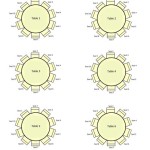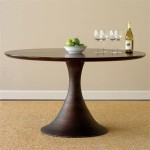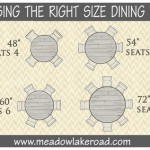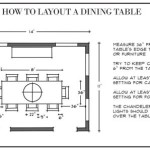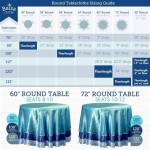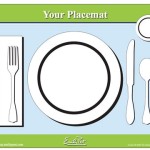What Are Standard Oblong Tablecloth Sizes?
Determining the correct size of an oblong tablecloth requires careful consideration of both the table's dimensions and the desired overhang. The common mistake is to assume that a tablecloth of the same listed size as the table will automatically fit perfectly. In reality, the intended aesthetic and functional purpose of the tablecloth dictate the optimal size selection. This article elucidates the standard oblong tablecloth sizes, the methodology for calculating the appropriate dimensions, and the factors that influence the selection process.
Oblong tables are prevalent in dining rooms, kitchens, and various event settings. Their elongated shape offers versatility in seating arrangements and presentation. Consequently, oblong tablecloths are manufactured in a wide range of sizes to accommodate these diverse table dimensions. Understanding these standard sizes and how they relate to specific table measurements is crucial for achieving the desired look and functionality.
The primary considerations when selecting an oblong tablecloth are the table's length, width, and the desired overhang. The overhang refers to the fabric that drapes over the edges of the table. This overhang serves both aesthetic and practical purposes. A consistent and appropriate overhang enhances the visual appeal of the table setting, while also preventing the tablecloth from easily slipping off the table. Furthermore, the overhang can protect the table edges from spills and minor impacts.
Understanding Standard Tablecloth Widths and Lengths
Standard oblong tablecloths are typically available in widths ranging from 52 inches to 70 inches and lengths ranging from 70 inches to 120 inches or more. However, these are not the only sizes available; custom sizing options often exist to cater to less common table dimensions. It's important to remember that these listed sizes represent the finished dimensions of the tablecloth, not the table it is intended to cover.
The most common widths include 52 inches, 60 inches, and 70 inches. The selection of the appropriate width depends directly on the width of the table itself and the desired overhang. A wider table necessitates a wider tablecloth to achieve an adequate overhang on either side.
The length of the tablecloth is equally important, as it determines the overhang at the ends of the table. Typical lengths include 70 inches, 84 inches, 90 inches, 104 inches, 108 inches, 114 inches, and 120 inches. Longer tables naturally require longer tablecloths to ensure a balanced and aesthetically pleasing appearance.
To illustrate, a standard 60-inch wide and 84-inch long tablecloth is commonly used on a table that is approximately 36 inches wide and 60 inches long. This would provide a 12-inch overhang on each side and end of the table. This example highlights the relationship between the table's dimensions and the tablecloth's size in achieving the desired overhang.
Manufacturers often provide size charts or guides to assist customers in selecting the correct tablecloth size. These charts typically list common table dimensions and the corresponding recommended tablecloth size. However, these charts should be used as a starting point, and the final decision should be based on individual preferences and the specific requirements of the table setting.
The fabric type can also influence the perceived size and drape of the tablecloth. Thicker fabrics may require a slightly longer overhang to achieve the same visual effect as thinner, more pliable fabrics. Similarly, fabrics with a looser weave may stretch slightly over time, which should be considered when selecting the appropriate size.
Calculating the Appropriate Tablecloth Size
The calculation of the correct tablecloth size is a straightforward process that involves determining the desired overhang and adding it to the table's dimensions. The following formula provides a clear and concise method for calculating the required tablecloth size:
Tablecloth Width = Table Width + (Overhang x 2)
Tablecloth Length = Table Length + (Overhang x 2)
To illustrate this formula, consider a table that is 40 inches wide and 72 inches long. If a 10-inch overhang is desired, the calculation would be as follows:
Tablecloth Width = 40 inches + (10 inches x 2) = 60 inches
Tablecloth Length = 72 inches + (10 inches x 2) = 92 inches
Therefore, a tablecloth that is 60 inches wide and 92 inches long would provide a 10-inch overhang on all sides of the table. It's important to note that this calculation assumes a uniform overhang on all sides. In some cases, a longer overhang may be desired on the ends of the table, or vice versa. This can be easily accommodated by adjusting the overhang value in the formula accordingly.
In instances where the calculated tablecloth size does not precisely match a standard size, it is generally recommended to err on the side of a larger size. A slightly longer overhang is often preferable to a tablecloth that is too short, as it provides a more refined and elegant appearance. Furthermore, a larger tablecloth can be easily adjusted or tailored if necessary.
When measuring the table, it is essential to use accurate measuring tools and to take measurements at the widest and longest points. Tables are not always perfectly rectangular, and variations in shape can influence the required tablecloth size. A flexible measuring tape is ideal for accurately measuring curved or irregular table edges.
It is also advisable to account for any potential shrinkage that may occur after the tablecloth is laundered. Natural fabrics, such as cotton and linen, are particularly prone to shrinkage. Pre-washing the tablecloth before use can help to minimize this issue. Alternatively, selecting a tablecloth made from a synthetic or blended fabric can reduce the risk of shrinkage.
Factors Influencing Overhang Selection
The desired overhang is a subjective element of tablecloth selection, influenced by both personal preference and the specific context of the table setting. Several factors influence the optimal overhang length, including the formality of the event, the style of the room, and the practical needs of the users.
For formal occasions, such as weddings or banquets, a longer overhang is often preferred. A full-length tablecloth, which extends to the floor, is commonly used in these settings. This creates a dramatic and elegant effect, enhancing the overall ambiance of the event. However, full-length tablecloths are not always practical for everyday use, as they can be easily soiled and may obstruct movement around the table.
For more casual settings, such as family dinners or outdoor gatherings, a shorter overhang is generally more appropriate. A 6-inch to 12-inch overhang provides a balanced appearance without being overly formal or cumbersome. This length is also more practical for everyday use, as it minimizes the risk of spills and snags.
The style of the room can also influence the overhang selection. In a modern or minimalist setting, a shorter overhang may be preferred to maintain a clean and uncluttered look. Conversely, in a more traditional or ornate setting, a longer overhang may be more appropriate to complement the existing decor.
The practical needs of the users should also be considered. If the table is frequently used by children or elderly individuals, a shorter overhang may be preferable to prevent tripping hazards. Similarly, if the table is used for activities that involve a lot of movement or spills, a shorter overhang may be more practical to minimize the risk of damage to the tablecloth.
The height of the table should also be factored into the equation. Taller tables may require a slightly longer overhang to achieve the desired visual effect. Conversely, shorter tables may require a shorter overhang to prevent the tablecloth from dragging on the floor.
Ultimately, the selection of the optimal overhang length is a matter of personal preference and the specific requirements of the table setting. By considering the factors outlined above, it is possible to choose an overhang length that is both aesthetically pleasing and functionally appropriate.
In conclusion, selecting the appropriate size of an oblong tablecloth involves a careful assessment of the table's dimensions and the desired overhang. By understanding the standard tablecloth sizes and the methodology for calculating the required dimensions, individuals can confidently choose a tablecloth that enhances the visual appeal and functionality of their table setting. The factors influencing overhang selection further refine the process, allowing for a personalized and tailored approach to tablecloth selection.

Use This Tablecloth Size Chart For Perfect Party Planning Lovetoknow

Pin By Candy Adams On Table Cloth Size Chart Tablecloth Sizes

Tablecloth Size Chart Asap Linen

Tablecloth Size Guide For Square Rectangular Round Tables

Tablecloth Size And How To Choose The Right One

Tablecloth Size Calculator Find The Right

What Size Tablecloth Do I Need Deconovo Us

Tablecloth Sizing Chart Gary Manufacturing Inc

How To Choose The Correct Size Tablecloth For Your Table

Measuring For A Tablecloth Size Chart Table Cloth Sizes
Related Posts

